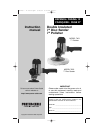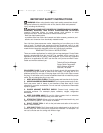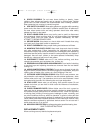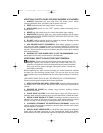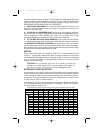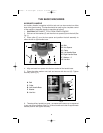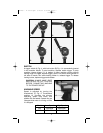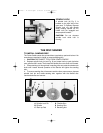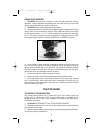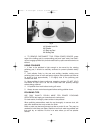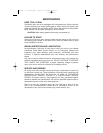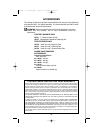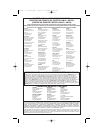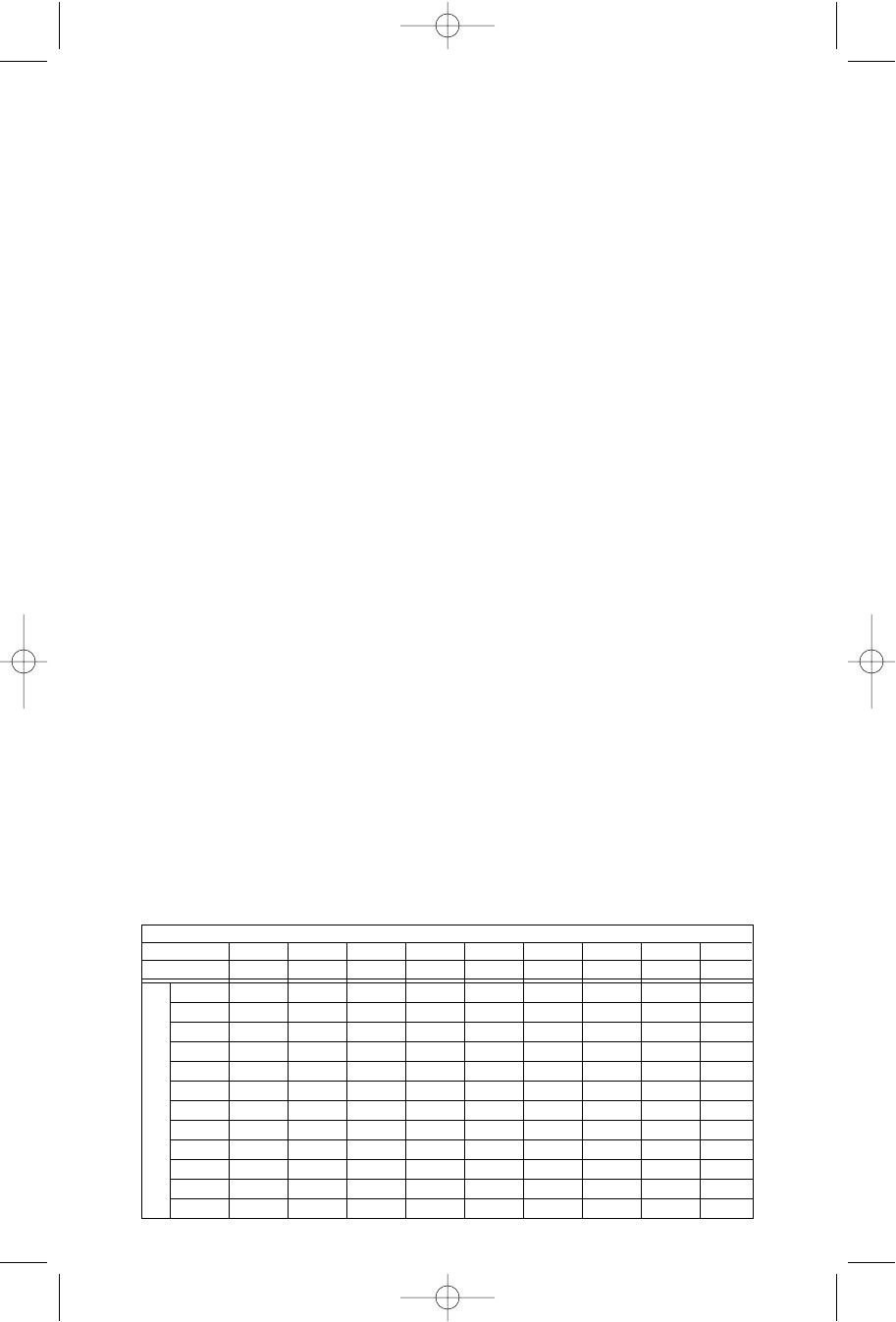
5
the United States Bureau of Mines. These masks and replaceable filters are
readily available at major hardware stores. Be sure the mask fits. Beards and
facial hair may keep the masks from sealing properly. Change filters often.
DISPOSABLE PAPER MASKS ARE NOT ADEQUATE.
7. KEEP FOOD AND DRINK out of the work area. Wash hands, arms, and
face and rinse mouth before eating or drinking. Do not smoke or chew gum or
tobacco in the work area.
8. CLEAN UP ALL REMOVED PAINT and dust by wet mopping the floors.
Use a wet cloth to clean all walls, sills and any other surfaces where paint or
dust is clinging. DO NOT SWEEP, DRY DUST OR VACUUM. Use a high
phosphate detergent or trisodium (TSP) to wash and mop areas.
9. AT THE END OF EACH WORK SESSION put the paint chips and debris
in a double plastic bag, close it with tape or twist ties and dispose of properly.
10. REMOVE PROTECTIVE CLOTHING and work shoes in the work area to
avoid carrying dust into the rest of the dwelling. Wash work clothes separately.
Wipe shoes off with a wet rag that is then washed with the work clothes. Wash
hair and body thoroughly with soap and water.
MOTOR
Many Porter-Cable tools will operate on either D.C., or single phase 25 to 60
cycle A.C. current and voltage within plus or minus 5 percent of that shown
on the specification plate on the tool. Several models, however, are designed
for A.C. current only. Refer to the specification plate on your tool for proper
voltage and current rating.
CAUTION: Do not operate your tool on a current on which the
voltage is not within correct limits. Do not operate tools rated A.C.
only on D.C. current. To do so may seriously damage the tool.
EXTENSION CORD SELECTION
If an extension cord is used, make sure the conductor size is large enough to
prevent excessive voltage drop which will cause loss of power and possible
motor damage. A table of recommended extension cord sizes will be found in
this section. This table is based on limiting line voltage drop to 5 volts (10 volts
for 230 volts) at 150% of rated amperes.
If an extension cord is to be used outdoors it must be marked with the suffix
W-A following the cord type designation. For example – SJTW-A to indicate
it is acceptable for outdoor use.
RECOMMENDED EXTENSION CORD SIZES FOR USE WITH PORTABLE ELECTRIC TOOLS
Length of Cord in Feet
115V 25 Ft. 50 Ft. 100 Ft. 150 Ft. 200 Ft. 250 Ft. 300 Ft. 400 Ft. 500 Ft.
230V 50 Ft. 100 Ft. 200 Ft. 300 Ft. 400 Ft. 500 Ft. 600 Ft. 800 Ft. 1000 Ft.
0-2 18 18 18 16 16 14 14 12 12
2-3 18 18 16 14 14 12 12 10 10
3-4 18 18 16 14 12 12 10 10 8
4-5 18 18 14 12 12 10 10 8 8
5-6 18 16 14 12 10 10 8 8 6
6-8 18 16 12 10 10 8 6 6 6
8-10 18 14 12 10 8 8 6 6 4
10-12 16 14 10 8 8 6 6 4 4
12-14 16 12 10 8 6 6 6 4 2
14-16 16 12 10 8 6 6 4 4 2
16-18 14 12 8 8 6 4 4 2 2
18-20 14 12 8 6 6 4 4 2 2
Nameplate Ampere Rating
NOTE: Wire sizes shown are AWG (American Wire Gage)
892459 - 11-30-00.QXD 2/25/02 8:23 AM Page 5



